| Zeitschrift Umělec 2001/1 >> Salon 26 | Übersicht aller Ausgaben | ||||||||||||
|
|||||||||||||
Salon 26Zeitschrift Umělec 2001/101.01.2001 Željko Blače | biennal | en cs |
|||||||||||||
|
The 26th Youth Salon, a key Croatian exhibition that presents a young generation of artists, opened at the Zagreb exhibition hall in January 2001. Since 1967 the Salon has given students not yet ready for individual presentations an opportunity to organize their first shows. It has also traditionally been a place to come and observe contemporary changes in art.
After several attempts at organizing exhibitions in this complex, the fifth pavilion has now become the place where for three weeks visual art is presented and relevant cultural events take place. This year’s Salon has again confirmed that young people want to maintain the tradition of making revolutionary changes there. On several occasions the curators of this year’s exhibition, Slaven Tolj, Jurij Krpan and Michal Koleček, have underscored the 1970s concept of reaching into society and politics. When the contest for the Salon award was announced, Tolj stressed the need to get beyond “the lack of ideas for Salon exhibitions. Works are being chosen, presented and awarded only within the framework of their own medium. The Academy students walk the well-trodden path from their education to exhibiting at the Salon and then on to helpless wandering.” Jurij Krpan, manager of Kapelica Gallery in Ljubljana, expressed a similar view in the introductory text to the first of two reports published during Salon. According to him the concepts of the “Salon” and the “young” turn this institution into an anachronism and distance it from the context that the curators and organizers are dealing with. Among the main “topics” of the exhibition were “individualism and/or collectivism,” “responsibility,” “frustration as an impulse,” and “humor.” These were the higher directives behind the general sensibility of the 26th Youth Salon, rather than the categories that the works were supposed to be presented in. The original plan called for around 270 works but in the end only 30 were displayed. The only excuse for this is the poor state of art production in Croatia. One of the primary tasks of this year’s Salon was the presentation of the various organizational models being formed outside the old institutions, adding to the universal context. With this aim in mind, Tolj introduced guests from foreign centers who were “…passionately infected by life and ready to see, hear and recognize the pulse of reality. By deciding to erase categories we are confirming that we are only people and not artists, sculptors, designers, architects and so on. No category or box will protect us from real life and real questions.” Erik Hobijn, Chemo-bar, 2001, performance Eclipse, untitled, 2001, billboard Aside from Michal Koleček, who has introduced lesser-known art projects at the Emil Filla Gallery in the Czech Republic, other guests included t0 Public Netbase from Vienna, the Foundation for Art and Creative Technology from Liverpool, Hull Time Based Arts from England, and Bureau of Low Technology—San Francisco. The guest list also included artists 01.org from Bologna, Eclipse from Ljubljana, James Wallbank from Redundant Technology Initiative, RtMark from the USA, performer Oscar Dawicki from Krakow, Hanor Hager, and a curator from London’s Tate Modern. Theory was an issue in the Salon for the first time, and this section was the only one open to artists over 35. Unfortunately, the theoretician event/performance artist, Maša Štrbac, wished to initiate a discussion on the Salon at the Salon itself but found no fertile soil. The guest theoretician Roy Ascott, who had been selected by Zoran Roško, the organizer of the theoretical part of the exhibition, was a poor choice, and coupled with Miška Suvaković’s non-attendance, this part of the exhibition failed to deliver. The theoretical group Past Forward from the Mama Institute presented two entries, but it is as hard to discuss their success as it was to hear above the noise in the pavilion. Sonja Bliski Uzelac took advantage of this bad constellation, working off the famous syntagma: “what, how and for whom to exhibit.” As did Goran Blagus with the text “Art on the Net,” which, in addition to being average and incorrectly titled (the author was talking about net art), it basically did not contribute to the theoretical field it was working in. The traditional AGM award was duly awarded to Tanja Dabo, whose work most visitors admired for its specifically intimate and modest testimony (a combination of black and white photographs and text). The curators, Krpan, Tojl and Koleček, tried to avoid a sporting-style kind of competitiveness, so they divided the Salon award equally between three artists: Denis Krasković for How the Damned from Hell Saved Ronald Regan’s Gangsters, Martin Crtalić for My Life, My Art, and Ivan Marusić Klif for an untitled interactive video-installation. Despite their diverse sensibilities all three shared an interest in the media The 26th Salon will probably be remembered for its grand intentions, which, lacking financial support and suffering organizational failures due to a number of compromises, unfortunately could not be realized. Public disinterest despite the prestigious guests from abroad, who clung together as if wishing they were holding a far more interesting show, tells us something about how little understanding there is for contemporary art. In the end, this year’s Salon remained, as Tojl had predicted, mostly a survey of possible directions and not a unified form. Translated by Lenka Kršiaková. Photo: Marko F. Ercegović
01.01.2001
Empfohlene Artikel
|
|||||||||||||
|
04.02.2020 10:17
Letošní 50. ročník Art Basel přilákal celkem 93 000 návštěvníků a sběratelů z 80 zemí světa. 290 prémiových galerií představilo umělecká díla od počátku 20. století až po současnost. Hlavní sektor přehlídky, tradičně v prvním patře výstavního prostoru, představil 232 předních galerií z celého světa nabízející umění nejvyšší kvality. Veletrh ukázal vzestupný trend prodeje prostřednictvím galerií jak soukromým sbírkám, tak i institucím. Kromě hlavního veletrhu stály za návštěvu i ty přidružené: Volta, Liste a Photo Basel, k tomu doprovodné programy a výstavy v místních institucích, které kvalitou daleko přesahují hranice města tj. Kunsthalle Basel, Kunstmuseum, Tinguely muzeum nebo Fondation Beyeler.
|







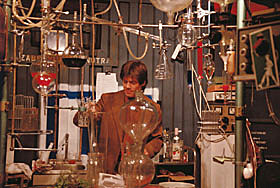
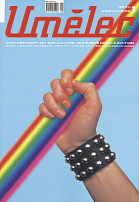




















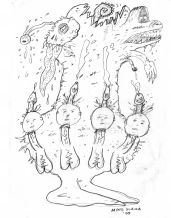
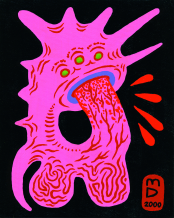
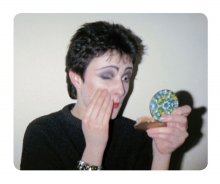
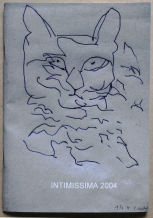


 We Are Rising National Gallery For You! Go to Kyjov by Krásná Lípa no.37.
We Are Rising National Gallery For You! Go to Kyjov by Krásná Lípa no.37.
Kommentar
Der Artikel ist bisher nicht kommentiert wordenNeuen Kommentar einfügen